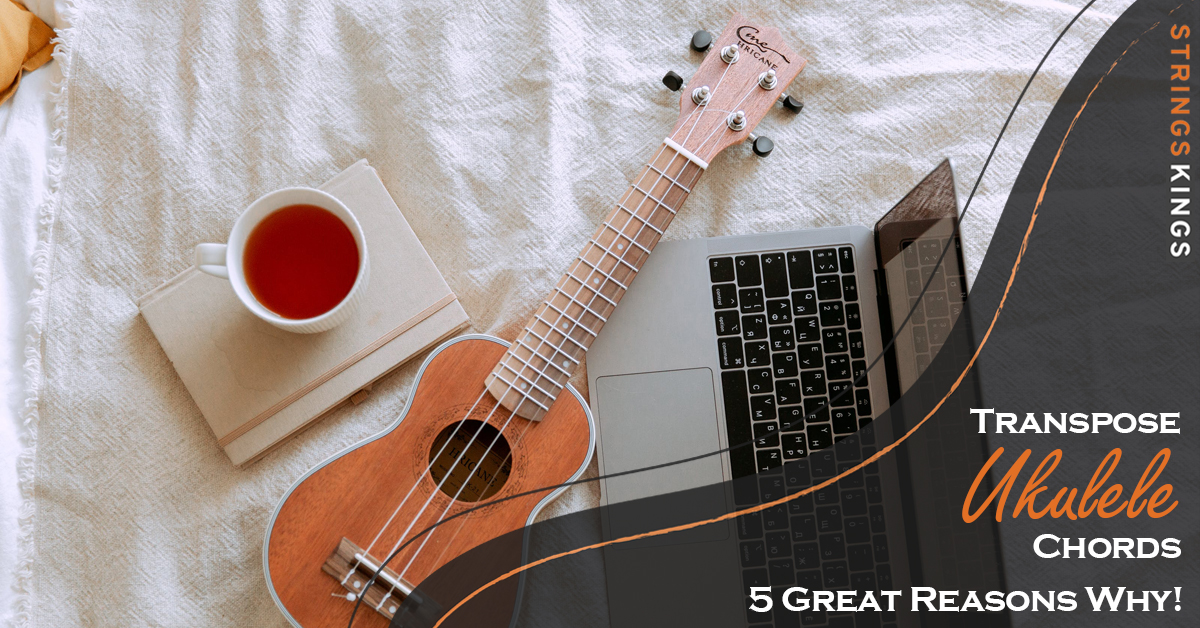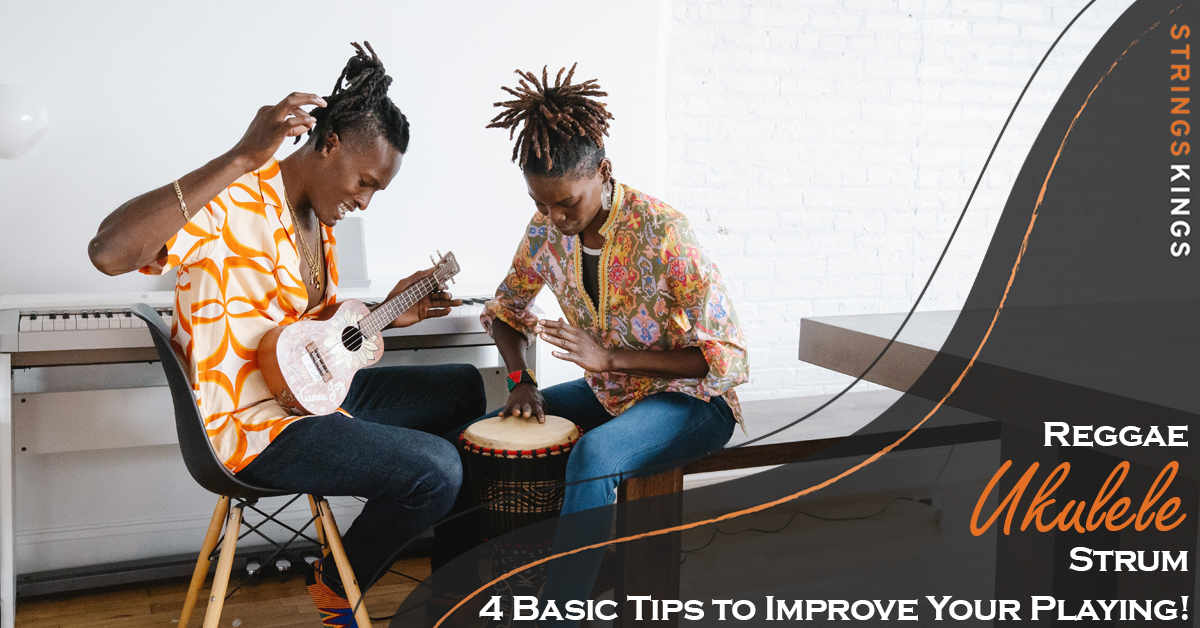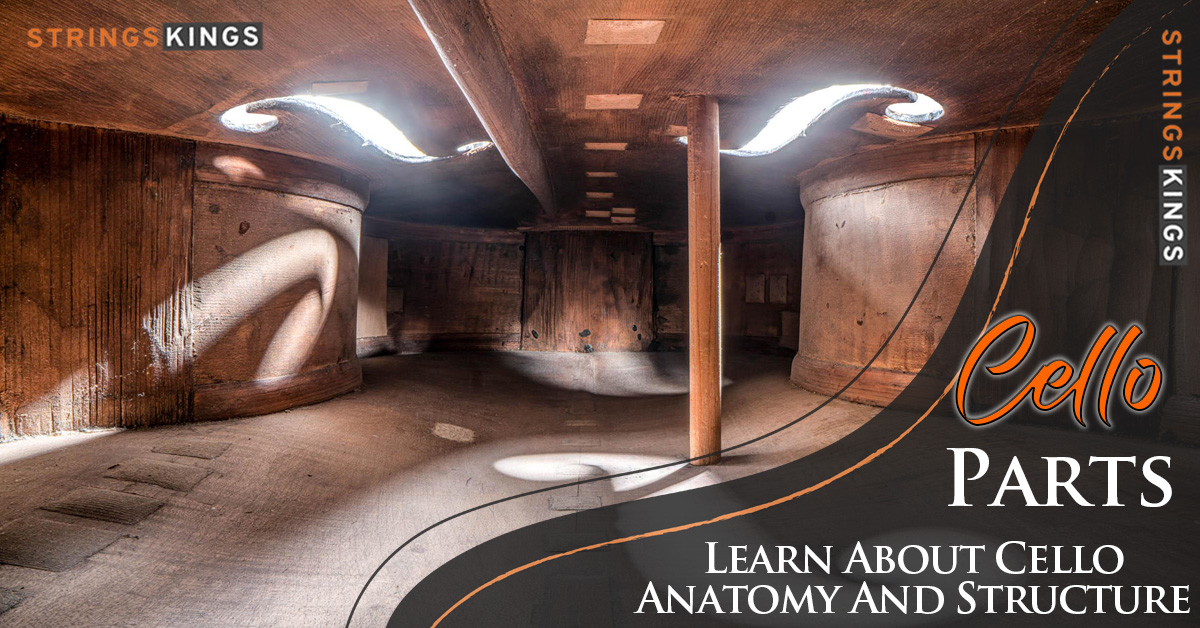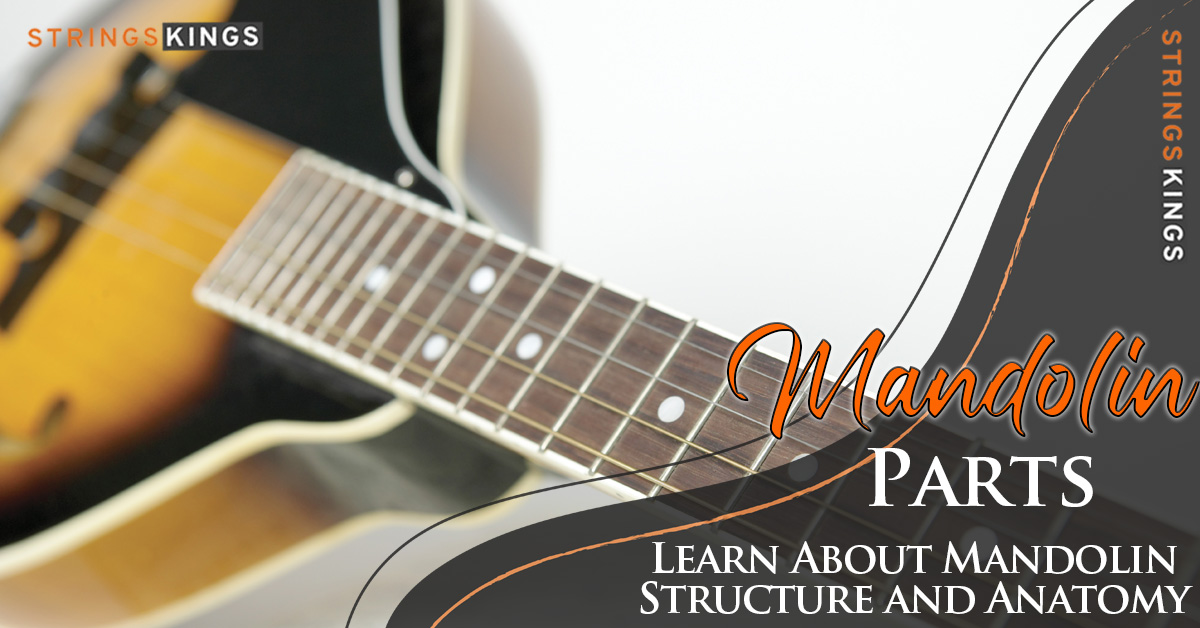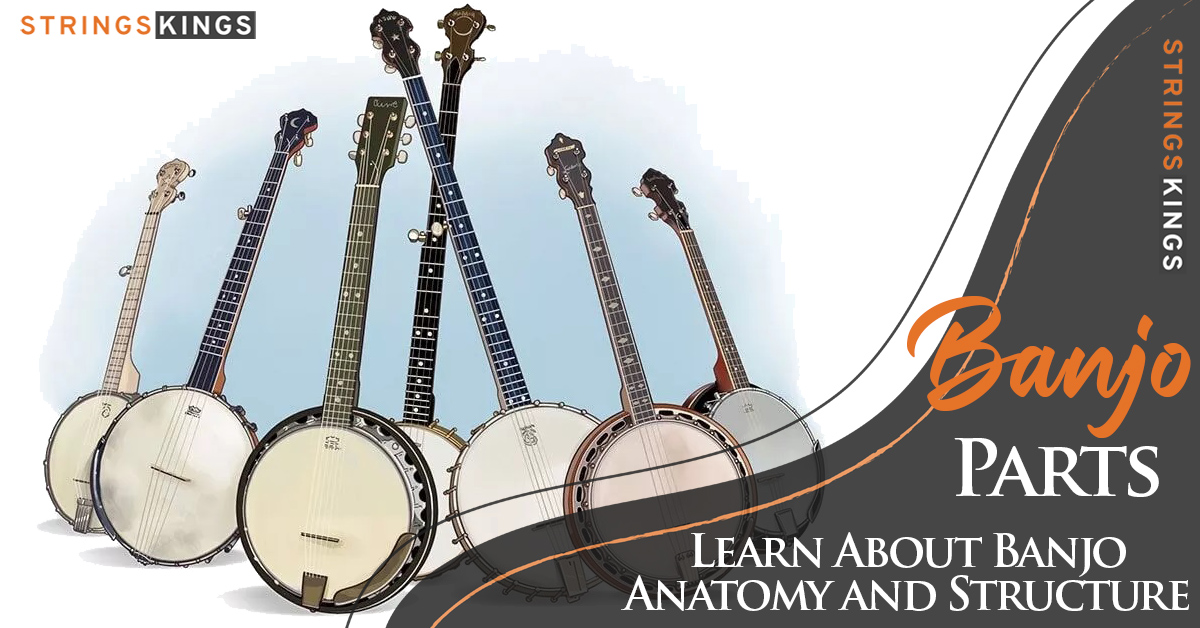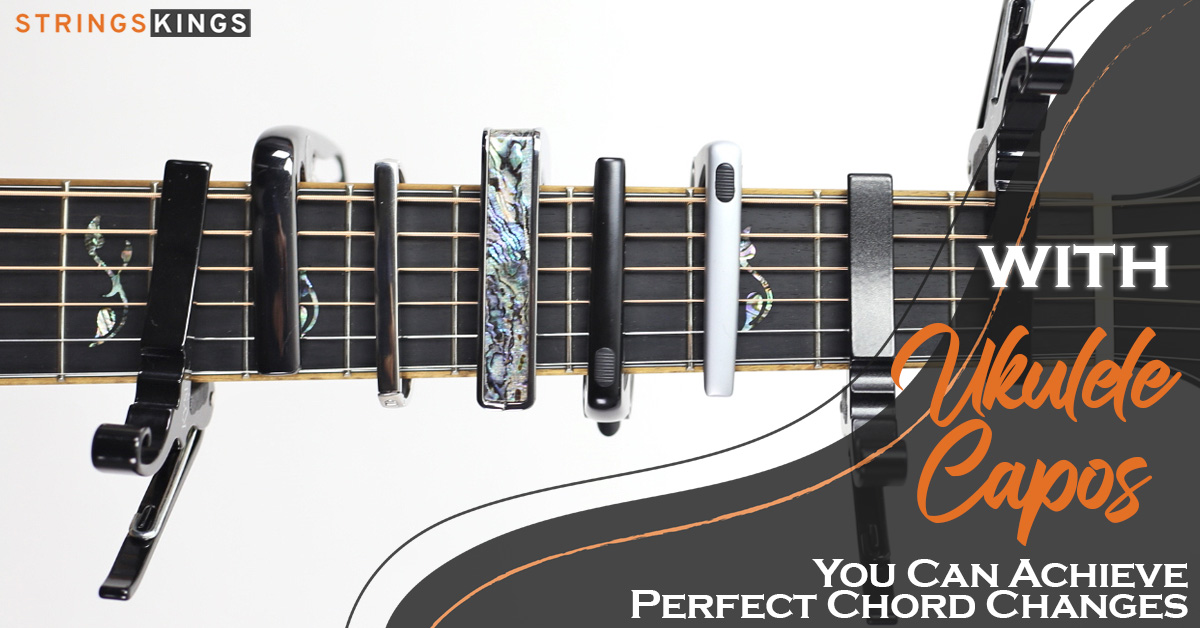Table of Contents
Can You Name All The Parts Of a Ukulele?
The fretboard and headstock are a few of the well-known parts of a ukulele. However, do you know that this small stringed instrument has more than ten parts? And, there’s even a part that’s often ignored but is responsible for keeping the strings in place.
Parts of a ukulele are important in delivering the sweet and bright tune that everybody loves. So, what are these parts, and what’s their function? Here’s a closer look at all of the ukulele components’ names.
If you wish to have a reasonably informed dialogue with your music teacher or need to look educated in front of your friends when you’re playing, you should know the names of the various parts of a ukulele.
Some are obvious, and some are a bit more obscure, however, we’ll take you thru all the things you should know concerning the anatomy of a ukulele, from the headstock to the strings to the frets.
Whether you’re utilizing a soprano, tenor, baritone, or even a concert ukulele, the parts of the instrument are the same. So, no matter you play, you’ll discover the information you need in our full ukulele anatomy guide.
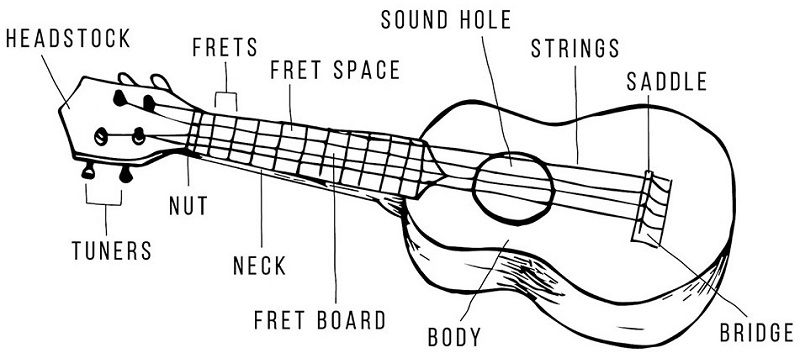
All Parts Of a Ukulele
Headstock
The headstock is located on the top of the neck and normally has the manufacturer’s logo. This ukulele part is mostly produced from a solid piece of wood as a result of it keeping the tuners and strings in place. Plastic headstocks are also accessible but are more prone to breakage or snapping.
When choosing a headstock, you’ll usually discover two options slotted and solid wood. With a solid headstock, one can find the strings and tuning pegs outside or on the back. However, a slotted headstock has slots where the rest of the string is. This design additionally has its tuning pegs on the outside of the headstock.
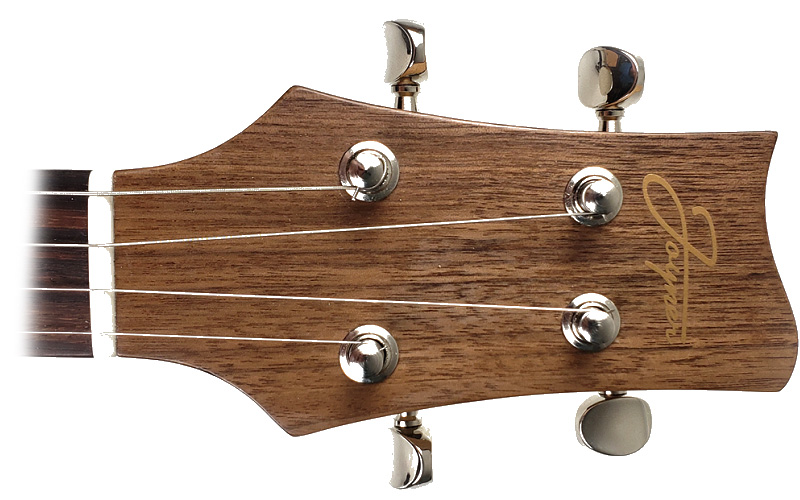
Tuners
The tuners rest on the headstock. These parts of a ukulele are usually known as tuning pegs, tuning keys, tuning heads, or machine heads because of the numerous changes in their design over time. There are normally four tuning heads, but there may be as many as eight.
Every string might be inserted through a small hole, which traps the string. Then, while you turn the peg, the string wraps around a steel cylinder, tightening or loosening the string.
Here’s a quick guide In case you’re installing new strings on your ukulele:
Thread the strings via the tuners. Then, you turn the tuning pegs to change a string’s pitch. You tighten strings to make higher pitches and loosen strings to make lower pitches.
Little tip: Before tightening strings, you’ll need to unwind the tuners to avoid over-stretching and breakage.
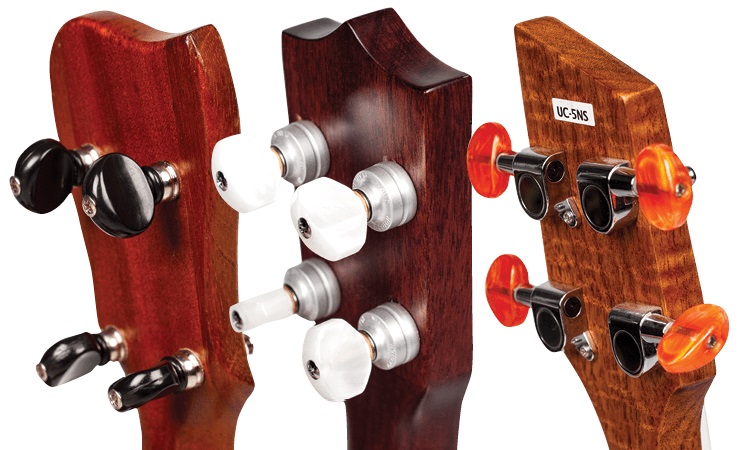
Nut
The part between the headstock and the fretboard is known as the nut. It’s a small ridge with evenly-spaced notches for each string to rest before going to the tuners. A nut is a few millimeters above the fretboard. The ukulele would be unplayable without it.
The strings rest on the nut in small grooves designed to maintain them spaced correctly. It also holds the strings up at the appropriate distance from the fretboard for the player to be able to play the strings and push down on the strings to create completely different notes.
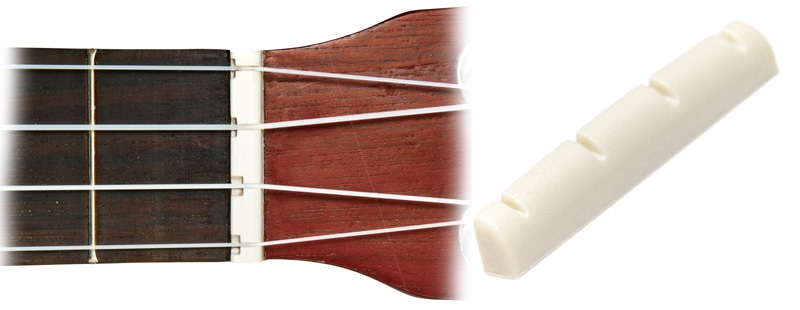
Fretboard
The fretboard stretches from the nut to the body in front of the neck. It’s a smooth, flat piece that holds frets in place, normally made from strong, darkish hardwood (like ebony or rosewood). You make notes higher by pushing the strings down onto it.
The fretboard is 12 to 19 frets long. This part is normally marked with fret markers at the fifth, seventh, tenth, and twelfth fret that will help you quickly and simply navigate the fretboard. These markers are known as fret markers, fret dots, or position markers. They’re normally white dots, but you’ll discover some ukes that use different shapes and colors.
Frets
The frets are the small steel bars that are attached to the fretboard at specific intervals. They stick up from the surface of the fretboard to be able to use your fingers to hold the strings down between the frets. This changes the tension of the string, which in turn changes the note produced when it’s strummed or plucked.
The frets are placed to change notes at semi-tonal increments. To attain this consistently, the space between the frets will get smaller and smaller as you progress closer to the body.
A ukulele works in a similar approach to a guitar, in that while you push down on the string, it’s the fret that marks the position of the note, rather than your finger itself. That is in contrast to instruments such as the violin or cello, the place there is no frets mark and the finger holds down the string. It’s tougher to get notes in tune on instruments that don’t have frets.
Fret Space
The ukulele parts name for the space on the fretboard between frets is just a fret space. The fret space is the place you hold down the string against the fret to form notes or chords. The fret spaces get smaller the nearer you get to the soundhole.
Neck
The neck stretches from the body to the headstock and supports the fretboard. It’s curved so you’ll be able to cup your hand around it and make playing on this neck comfortable. The heel is the part of the neck that joins the body and is normally where a strap button is attached.
Strong wood normally makes up the neck, headstock, and fretboard. Generally, the fretboard is glued onto the neck. Either way, it should be sturdy enough to resist the tension of the strings.

Body
The main part of the ukulele, the box part that you cradle in your strumming arm, is the body of the ukulele. It’s composed of a front piece (which has a sound hole), a back piece, and sides. The part furthest from the neck is named the butt, and the part closest to the neck is named the shoulder.
Ukulele’s tone that will be produced depends principally on the body of the ukulele because the vibrations produced by strumming the ukulele are captured and amplified by the body.
The biggest of the ukulele parts is its body or soundbox. Its dimension relies on its type: soprano, concert, tenor, and baritone. The body has a top, back, and sides which have a middle (waist), upper bout (shoulders), and lower bout (hips).
The solid wood body of the ukulele has a rich loudest sound that laminate ukes don’t. Laminate ukuleles are less durable because they’re created by pressing together pieces of wood.
Standard bodies deliver full-sounding lower tones. Bodies with cutaways or scallops don’t have the same fullness. However, it’s simpler to access the bottom of the fretboard.
Strings
Ukulele strings are chosen and tuned based on the instrument’s dimension. Normally, concert and soprano ukes have nylon strings, and tenor and b
Strings dull and dent, and tones get flatter. You’ll need to change these to maintain them from breaking. After changing them, you’ll have to re-tune the strings regularly.
Saddle
The saddle is one more element in parts of a ukulele that is positioned on top of the bridge by the sound hole. Just like the nut, this ukulele part holds the strings above the fretboard. Small notches in the saddle hold the strings an equal distance apart from one another. You’ll be able to remove the saddle.
The saddle is usually produced from plastic or a material similar to bone.
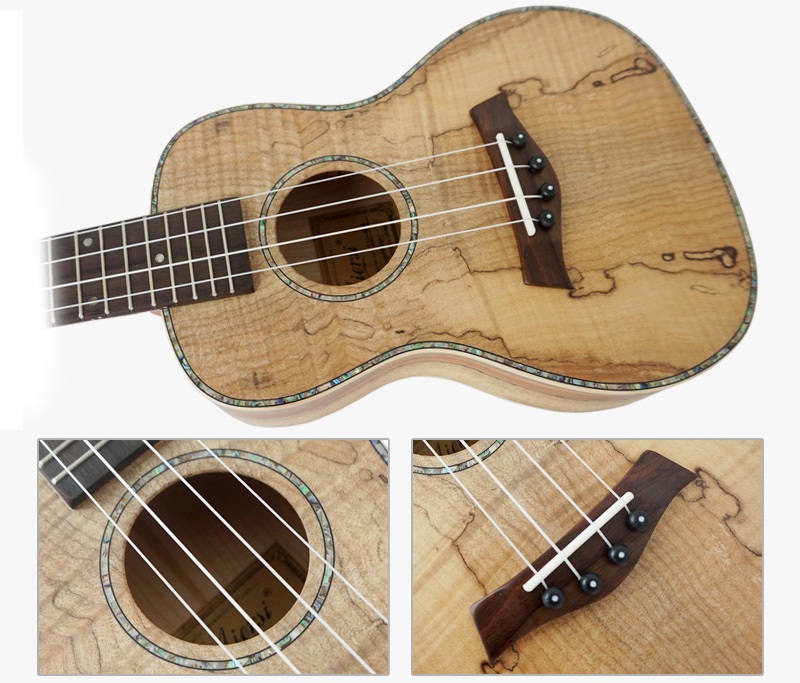
Bridge
The bridge is the piece on the front of the body, which holds the strings in place and holds them down on the body. On most ukuleles, this piece will normally be glued down. There are three normal types: a tie-bar, through the body, and a pin bridge.
A tie-bar has small holes in it through which you’ll be able to thread the strings. There’s then a method for tying the strings to the bridge to secure them.
A through-the-body bridge requires you to push the string through the bridge and pull it out of the sound hole. Then tie a knot in the string and pull it back through the bridge and string the ukulele as normal. The thinner strings might require a double knot so it doesn’t slip out of the bridge.
A pin bridge works much like the bridges you see on guitars. First, pull the pin out of the bridge. Tie a knot at the end of the string. Push the knot of the string into the bridge hole and then put the pin back into the bridge and string as normal. While tuning put pressure on the pin so it doesn’t pop out.
Sound-Hole
The sound hole is a (normally) circular hole located in the middle of the body. Others are offset or dual. The rosette is an inlaid pattern that decorates the sound holes of some ukes.
The vibrations go into the body through the bridge. The sounds caused by the vibrations reverberate inside and project from the sound hole. Sound-hole produces the loudest and deepest sound once you strum above it and more mellow sounds while you strum further up the neck.
In case you strum straight over the sound hole, you’ll produce a noticeably louder sound than in case you strum further up or down the strings.
Many ukuleles may have an inlaid pattern around the soundhole. That is known as the rosette and is purely for aesthetic purposes.
Some ukuleles have been putting an additional small soundhole on the side of the ukulele known as a sound port.
Ukulele Anatomy – All parts of a ukulele explained
Conclusion About Ukulele Parts
And, there you have it, parts of a ukulele include 12 components consisting of the headstock, tuners, nut, fretboard, frets, fret spaces, body, strings, saddle, bridge, neck, and soundhole. All of these work together to supply stunning sounds unique from any other instrument.
So, there you are, all the ukulele parts are in this article. The next time you have a dialogue with your music teacher, don’t feel nervous that you may struggle to use the proper words and clarify what you mean. If you pop into the music store, have an informed conversation with the employees. Playing for your buddies? Impress them with your knowledge of the ukulele as well as with your playing.

